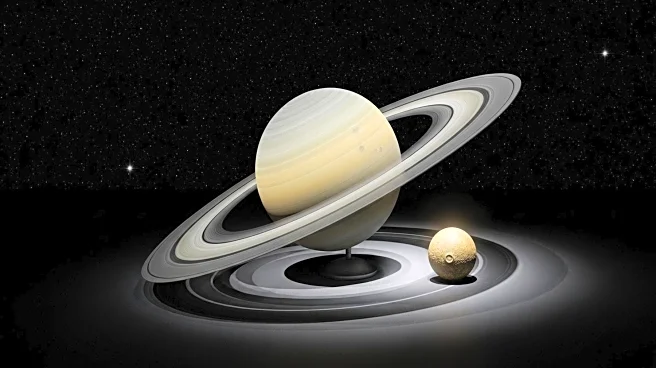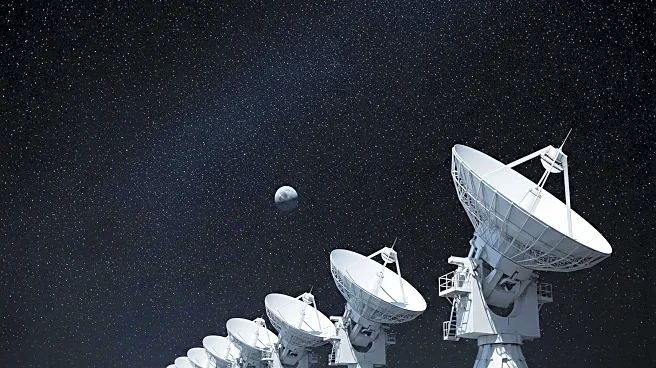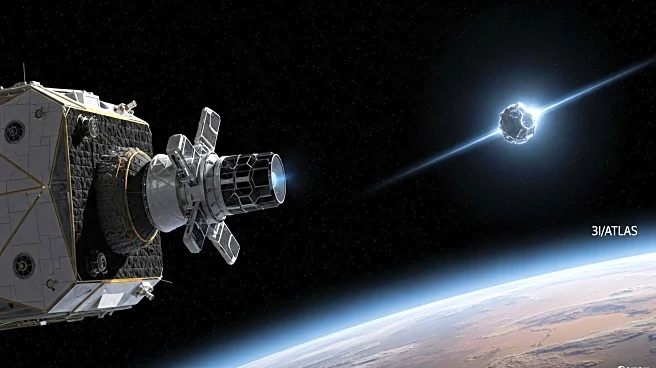What's Happening?
NASA's recent study, based on data from the Dawn mission, indicates that the dwarf planet Ceres may have once been habitable. The research, published in Science Advances, reveals that Ceres had a long-lasting internal heat source driven by radioactive decay, which could have sustained habitable conditions in its subsurface ocean. This heat source, reaching temperatures over 550 Kelvin, caused thermal metamorphism, releasing mineral-rich water into the ocean. The chemical imbalance created by this process could have provided energy for chemotrophic life, fulfilling a key requirement for habitability alongside liquid water and organic molecules. The study suggests that Ceres's potentially habitable period lasted hundreds of millions of years between 2.5 and 4 billion years ago.
Why It's Important?
The findings expand our understanding of habitability beyond Earth, suggesting that Ceres had all the necessary ingredients to support microbial life. This research highlights the potential for other mid-sized, water-rich worlds in the outer solar system to have hosted habitable periods in their past. The study underscores the importance of exploring celestial bodies for signs of life and understanding their evolutionary paths. It also emphasizes the role of NASA's Dawn mission in providing valuable data that continues to inform scientific research.
Beyond the Headlines
The implications of this study extend to the broader search for life in the universe, as it suggests that habitable conditions may have existed on other celestial bodies. The research also raises questions about the potential for life to arise in environments without sunlight, relying solely on chemical energy. This could lead to new theories about life's adaptability and resilience in extreme conditions.










